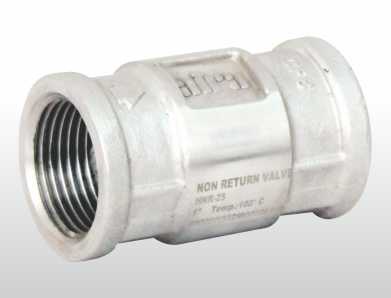Non return valves play a crucial role in ensuring the smooth operation of various fluid systems by preventing the reverse flow of fluids. From simple household plumbing systems to complex industrial processes, these valves are indispensable components. Let's delve deeper into understanding what non return valves are, how they work, their types, applications, and much more.
What is a Non Return Valve?
A non return valve, also known as a check valve or one-way valve, is a mechanical device designed to allow fluid or gas to flow in one direction while preventing reverse flow. Essentially, it acts as a barrier that opens and closes automatically to regulate the flow direction based on pressure differentials.
How Does a Non Return Valve Work?
The operation of a non return valve relies on its design and the force exerted by the fluid or gas passing through it. When the pressure on the inlet side exceeds that on the outlet side, the valve opens, allowing the fluid to pass through. However, when the pressure on the outlet side becomes higher, the valve closes, preventing backflow.
Types of Non Return Valves
There are several types of non return valves available, each suited for specific applications:
- Swing Check Valve: Utilizes a hinged disc to allow flow in one direction.
- Lift Check Valve: Features a movable disc or piston that lifts to permit flow and closes under reverse flow conditions.
- Ball Check Valve: Utilizes a spherical ball to control the flow direction.
- Wafer Check Valve: Compact design suitable for tight spaces, commonly used in pipelines.
Applications of Non Return Valves
Non return valves find extensive use across various industries and systems, including:
- Plumbing Systems: Prevents the backflow of sewage or wastewater.
- Hydraulic Systems: Ensures unidirectional flow of hydraulic fluids.
- Piping Systems: Safeguards pipelines in chemical plants and refineries.
Advantages of Non Return Valves
The utilization of non return valves offers several benefits:
- Prevents backflow: Protects equipment and maintains system integrity.
- Ensures system efficiency: Facilitates uninterrupted flow and operation.
- Easy to install and maintain: Requires minimal intervention for upkeep.
Considerations When Choosing a Non Return Valve
It is important to consider the following factors when selecting a non-return valve:
- Flow rate: Matching the valve's capacity with the system's flow requirements.
- Pressure rating: Ensuring the valve can withstand the system's operating pressure.
- Material construction: Selecting materials compatible with the fluid and environmental conditions.
Common Issues and Troubleshooting
Despite their reliability, non return valves may encounter issues such as leakage, sticking, or corrosion. Regular inspection and timely maintenance can mitigate these problems.
Maintenance Tips for Non Return Valves
To prolong the lifespan and efficiency of non return valves, adhering to maintenance protocols is essential. This includes periodic inspections, cleaning procedures, and prompt replacement of worn-out components.
Importance of Non Return Valves in Various Industries
Non return valves play a vital role in industries such as water treatment, oil and gas, and manufacturing, where maintaining fluid flow direction is critical for operational efficiency and safety.
Future Trends in Non Return Valve Technology
Advancements in materials and design are paving the way for more efficient and durable non return valves. Smart valve technology, incorporating sensors and automation, holds promise for enhanced performance and predictive maintenance.
Environmental Impact of Non Return Valves
By preventing backflow and leakage, non return valves contribute to resource conservation and pollution reduction, aligning with sustainable practices in fluid management.
Regulatory Standards for Non Return Valves
Compliance with industry standards and certification requirements ensures the reliability and safety of non return valves in diverse applications.
Cost Considerations for Non Return Valves
While the initial investment in non return valves may vary, their long-term benefits, including reduced downtime and maintenance costs, outweigh the upfront expenses.
Conclusion
Non return valves serve as indispensable components in fluid systems, safeguarding against backflow and ensuring operational efficiency across various industries. Understanding their types, applications, and maintenance requirements is crucial for optimizing system performance and longevity.


No comments yet